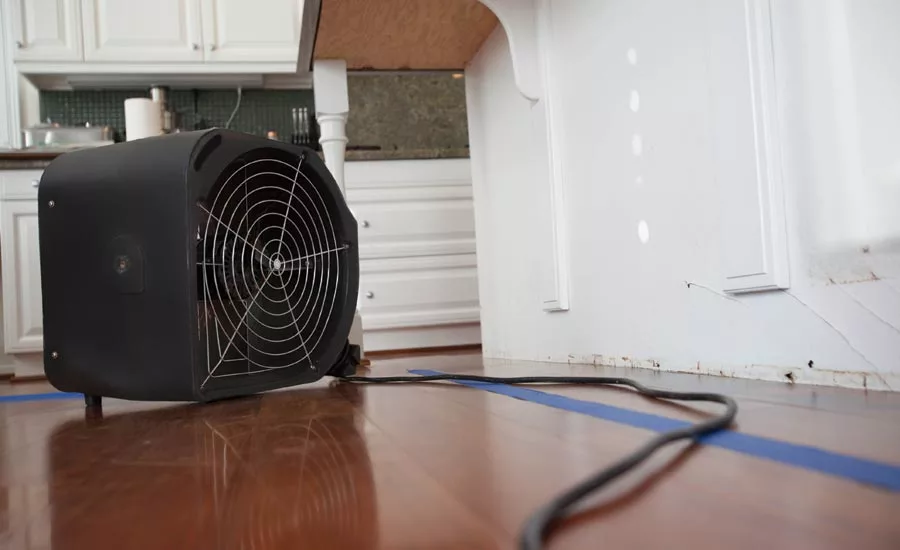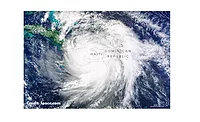5 Key Elements for Handling CAT Loss Contents Restoration


As I prepare to write this article about handling contents during a CAT loss flood situation, I am watching the State of California experience some of the worst flooding in its history. Entire neighborhoods have been evacuated and homes have been swallowed by over flowing rivers and spillways.
By the time this article goes to print, hopefully the flooding will have receded and most will be well on their way to recovery. It breaks my heart to see people go through such a stressful situation and it is in large part why I got into this industry.
CAT losses are a prime example of how the restoration industry relieves a lot of stress, anxiety and pain for so many. In a mass flooding situation, a restoration contractor is the equivalent to the emergency room doctor. Everyone is looking to you for guidance, answers and some sense of calm amongst the chaos. And just like a doctor, the contractor needs the right equipment, systems, manpower, support team and prior training to be able to do their job.
1. Support Team
Right off the top, you need to have a base of operations to handle the logistics of organizing and coordinating all the contents jobs. People at the base need to be a really good support team for those out in the field. Location is not critical – it could be on site, at the office, or even in a different state.
I usually set up a command center at a local hotel room. The center handles things like billing, specialty subcontractor coordination, hotel, food, transportation needs, manpower issues, supply inventory and more. This base supports my teams out in the field and helps handle the backstage stuff so work doesn’t get bogged down on the job site. This also helps our teams be more organized and on top of it on site for the homeowner, making us look more professional.
2. Training
There are many moving parts to CAT losses. Training for these events needs to happen long before you are on the ground handling jobs. This includes being able to do estimates quickly, using software in the field (we will cover this in a moment), gathering important details from each job, having the right paperwork, knowing how to use all the equipment, and knowing what adjusters need in situations like this. Bottom line about adjusters: they need to be able to understand the big picture of the loss and get all their questions answered quickly. This is key to getting paid quickly and in full.
Let’s get specific. How do you know when to dry it, log it, or just throw it away during a category 3 water loss? Obviously some items have no value and just need to be thrown away – like most old magazines. Then there are items you can clean and dry. These contents should be treated as contaminated in a category 3 loss and cleaned accordingly using an antimicrobial solution. Once the item is cleaned you can now dry, inventory and pack it.
3. Manpower
This is a topic I get asked about a lot. Finding good, dependable help can be tricky in a CAT loss scenario. Restoration work needs to happen quickly, and without enough hands, you can only handle so much. Utilizing temporary labor sources is usually the best option here, but the key is to have your own trained supervision.
For instance, when I was back in Maryland working Hurricane Irene, I had two supervisors with me and we each ran a team of five to 10 people who came from the local temporary labor companies. By doing this, my manpower grew from three employees to 20-30 employees overnight. Each of my supervisors was trained and certified in all aspects of CAT loss work. They watched over all aspects of the job, monitoring quality control and proper protocols. It’s very important you have proper protocols in place when using labor in this way so you do not wind up on the wrong side of a lawsuit.
You can also call on others you may know in the industry to see if they can send any help to work with you.
4. Billing Software
Using proper billing practices in a CAT loss situation can literally make or break your business. I have seen restoration contractors become millionaires and watched a few go bankrupt doing CAT losses.
You need to have a good billing software program set up on a laptop, computer or other device and be able to complete your scope of repairs for payment on the spot from your homeowner or to send to your adjuster as soon as work is complete on a job. Staying on top of your billing is very important.
I recommend Xactimate as it is the most widely used insurance billing software in the industry at this time. And most adjusters are familiar with it. Understanding how to fully utilize your billing software is crucial to your bottom line. After all, you don’t want to be leaving thousands of dollars on the table and not even know it. You need to understand how to properly fill out the notes and details on each job so that your scopes will get approved and paid quickly without hassles. This is something to invest in when looking for training to gear up for these types of losses.
I think it is also important to mention verifying coverages. A flood is very different than a “traditional” water loss. You may be dealing with FEMA instead of an insurance company when it comes to getting paid and they have some different rules in regards to billing and work done.
A good contents inventory system or software is also important for billing and job tracking.
5. Equipment
There is a lot of equipment needed to handle CAT losses. For contents work in major flooding situations, the equipment you need isn’t a lot different than the equipment you use on a CAT loss fire situation. You will need dehumidifiers, air movers, HEPA machines, odor removal equipment and HEPA vacuums.
You can rent a lot of this equipment instead of sinking a lot of cash into purchasing equipment that may only be in use for a few weeks before being shelved. Renting can a good way to leverage yourself into large losses without going into debt.
No matter how you get the equipment, you need to track it. You should be able to see at any given time what equipment is on what job and how long it has been there.
If you own the equipment, it should be marked and numbered with a complete inventory being done before it goes out into the field.
Most rental companies will have their equipment numbered, making it easy for you to track as well. Be sure you have a complete inventory done of rental equipment before it goes out. This is not only important so you don’t wind up losing expensive pieces of equipment, but also so you can justify your charges to your homeowner or adjuster if need be.
As you can see, jumping into a CAT loss situation unprepared could be pretty disastrous not only for the restoration contractor, but for everyone involved. However, with some preparation and good planning, you could be that contents restoration contractor that becomes the hero to those in need.
Looking for a reprint of this article?
From high-res PDFs to custom plaques, order your copy today!









